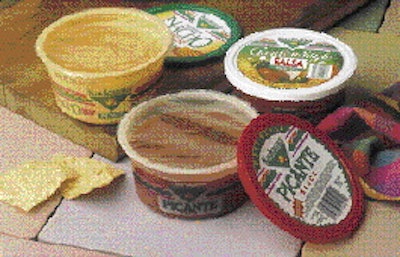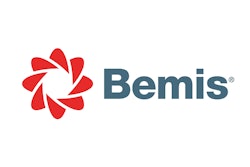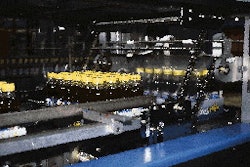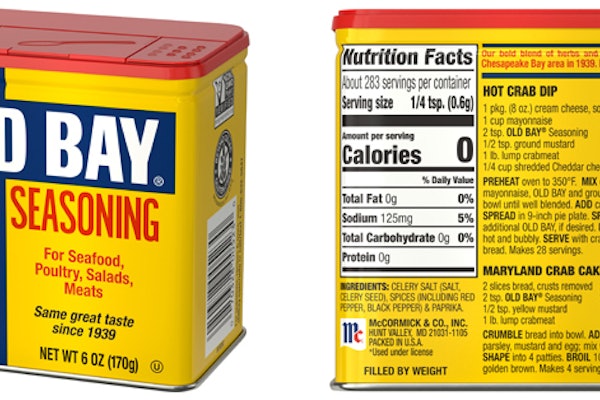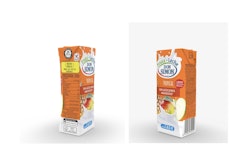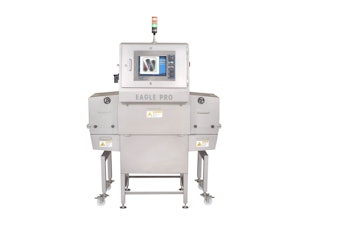Bel/Kaukauna U.S.A. may be best known for its refrigerated cheese spreads. But the Kaukauna, WI, firm has also tasted success with its 1988 introduction of shelf-stable salsas, sauces and dips in plastic cups. More recently, however, the company was left with a bad taste caused by leakers, primarily in its 12-oz salsas, but also in its 8- and 10-oz sizes.
According to Chuck Kiley, the company's purchasing agent, the problem originated with Bel/Kaukauna's decision to change lidstock back in the mid-'90s. "We wanted to provide consumers with the convenience of a peelable structure so that they wouldn't have to use a knife to open the pack."
At that time, the lidding was made from the same plastic material that was in the sealing surface of the cup, "so the heat seal created somewhat of a permanent bond," explains Bob Eger, Bel/Kaukauna's director of operations.
In 1995, the company began experimenting with dissimilar structures to alleviate the problem. "But during our testing, we found that the leakage problem on the 12-oz wide-mouth, high-volume product wasn't acceptable. We had to stay with the bonded structure," Eger says.
The specific problem, Kiley explains, "was that the lidding film we used couldn't withstand the hot-filling process, where product is filled at about 175- to 185-degrees Fahrenheit." Trouble was, the heat and pressure from hot filling would occasionally cause the headspace air to break the seal between the lidding and the plastic cup.
That wasn't a problem on the two smaller sizes because, as Eger notes, "there's not as much air and pressure in those cups." Therefore, a peelable structure was adopted for the smaller 8- and 10-oz sizes.
Even after devising a proprietary cooling procedure to reduce leakers, which the company wouldn't discuss, "We were pulling leakers off our line at a rate of five to 10 percent, where only one percent is acceptable," says Hans Wurster, executive vice president of marketing and sales at the time. He has since retired.
Supplier solution
While Bel/Kaukauna continued to work with its lidding supplier to remedy the situation, it also summoned Curwood (Oshkosh, WI). "Curwood is a major supplier of films that we use for our cheese balls and cheese logs," notes Kiley. "We approached them and they developed a design for a peelable film that has worked well for the large size."
Last November, the Kaukauna company began full production of the 12-oz cups with the Curwood lidding film. The 13/4-mil three-layer coextrusion includes a thin polypropylene sealant layer/Curwood's proprietary EZ Peel®/polyethylene blend. That structure is adhesive-laminated to a 60-ga polyvinylidene chloride-coated polyester outer film.
The PP sealant still provides a "bond" to the PP cup, but the coextrusion permits peelability that wasn't possible with the previous structure. According to Curwood, the structure provides a strong seal even if product strays into the seal area. The outer layer provides an improved oxygen and moisture barrier.
"The new lidding can withstand the hot fill, maintain the bond and is still peelable," says Bel/Kaukauna's Eger. "Since we made the switch, we also converted the lidding film for the two smaller sizes to the Curwood film."
Kiley contends that even though the Curwood film provides easy-opening peelability and is reportedly thicker than the previous structure, it's also about 61/2% less expensive. "They give us a better quantity pricing because we buy all our cheese ball film from them," he says.
Hot-fill process
The lidding rollstock is placed on an unwind on a BWI Holmatic (Davenport, IA) PR-3 intermittent-motion cup filling machine. Purchased many years ago, the machine accommodates Bel/Kaukauna's different cup sizes. Eger says the company uses change parts not only for the die rollers that cut the lidding from the film, but also for the cup dispensers and for the conveyor platens that hold the cups.
The PR-3 automatically takes nested cups from a magazine and positions one into each of three pockets on its pocketed conveyor. The 8-, 10- and 12-oz cups are thermoformed by Printpack's Rampart Packaging Div. (Williamsburg, VA). The multilayer cups include PP, as well as ethylene vinyl alcohol to provide oxygen barrier. The converter dry-offset-prints the containers in four to six colors.
The salsa is blended, pasteurized and held at temperatures as hot as 185°F, then pumped to the PR-3. The three-nozzle volumetric piston filler dispenses salsa simultaneously into the three cups. Operating at 30 cycles/min, the machine produces 90 filled cups/min.
The filled cups continue to the sealing station. The Curwood rollstock unwinds and first moves through a rotary die cutter that perforates the film by pinching it between an anvil roller and a die that resembles a cookie cutter. The film is positioned over the cups so that the three circular perforations on the film align with the awaiting cups. A sealing head and stripper plate descend to seal the material to the cup, the head retracts and the skeletal web is rewound.
At the next station along the 15'-long machine, a linear low-density PE overcap is applied to the sealed container. Supplied by Tech II (Springfield, OH), the injection-molded lid is tinted red to indicate "hot," green for "medium," and purple for "mild."
Downstream, the lidded containers proceed through a metal detector, then a labeler that applies a colorful pressure-sensitive label to the lid, an ink-jet coder, case packer and palletizer. None of the equipment is new. Pallet loads are placed in a cooler for 24 hours before they're stretch-wrapped and shipped by truck to retail customers nationwide.
The salsas have a nine-month shelf life, and they retail for $2 to $4, depending on the size. "With our complete Mexican line packaged with a reliable peelable lid, we feel we have significantly improved our offering in the deli marketplace," says Wurster. (JB)
